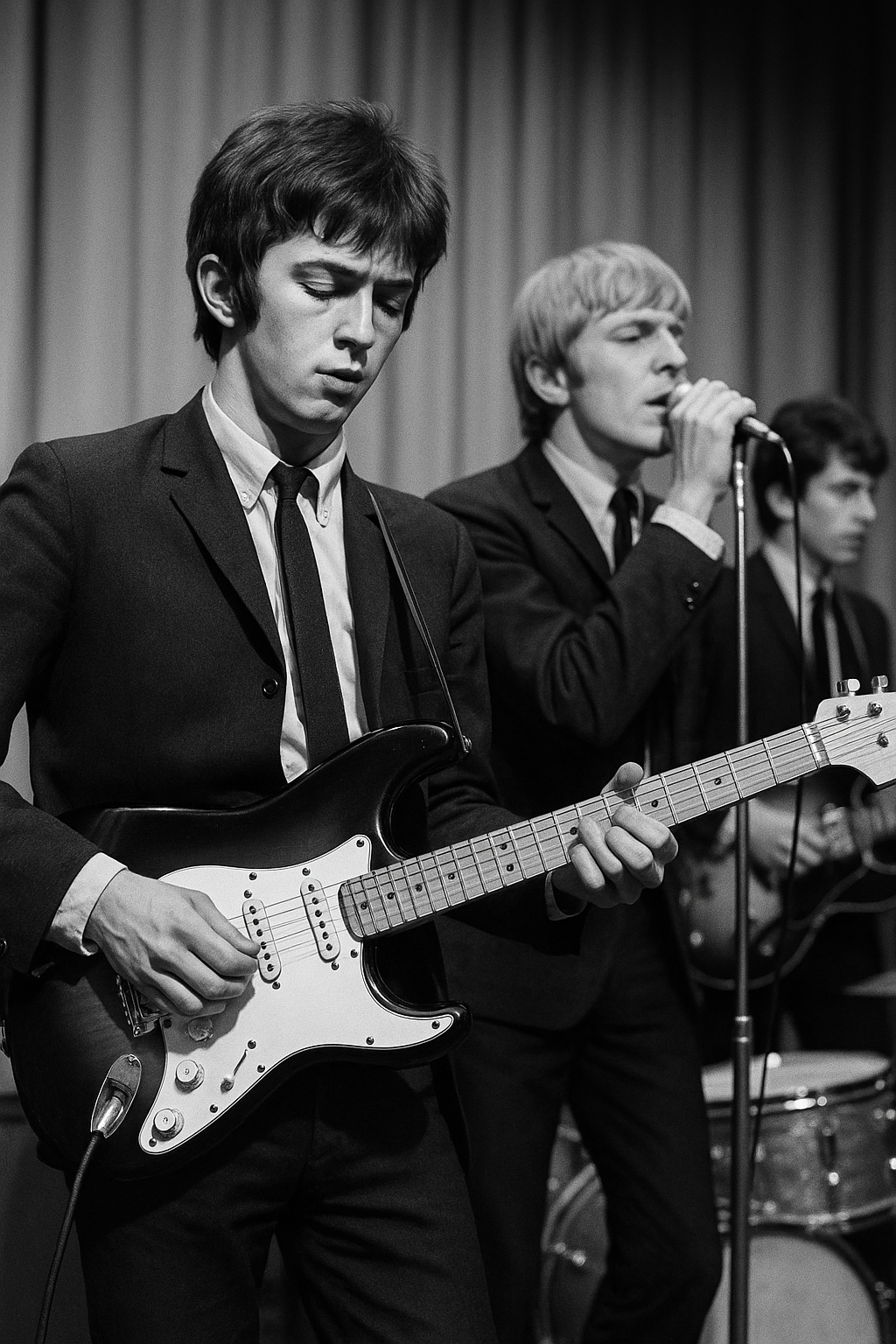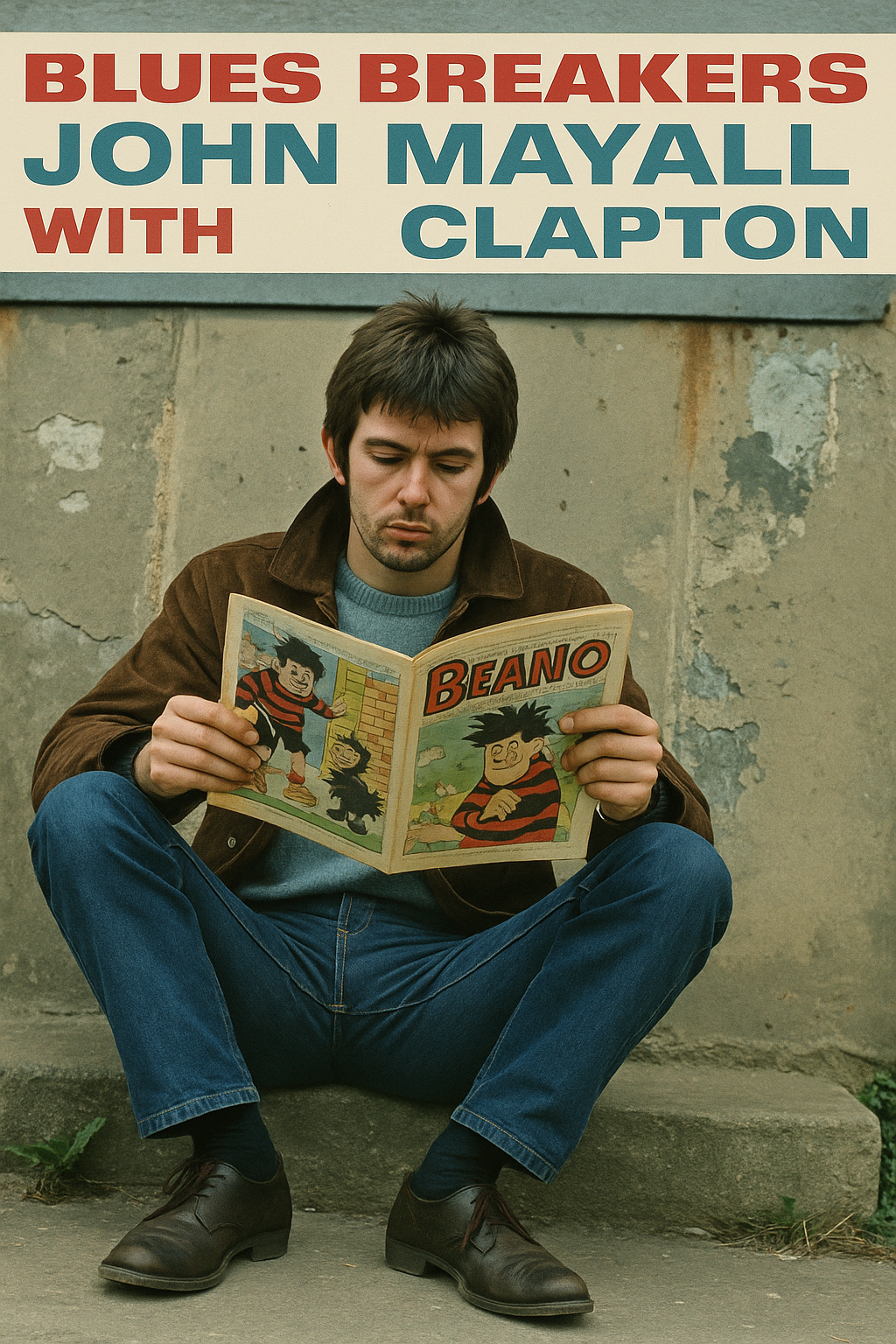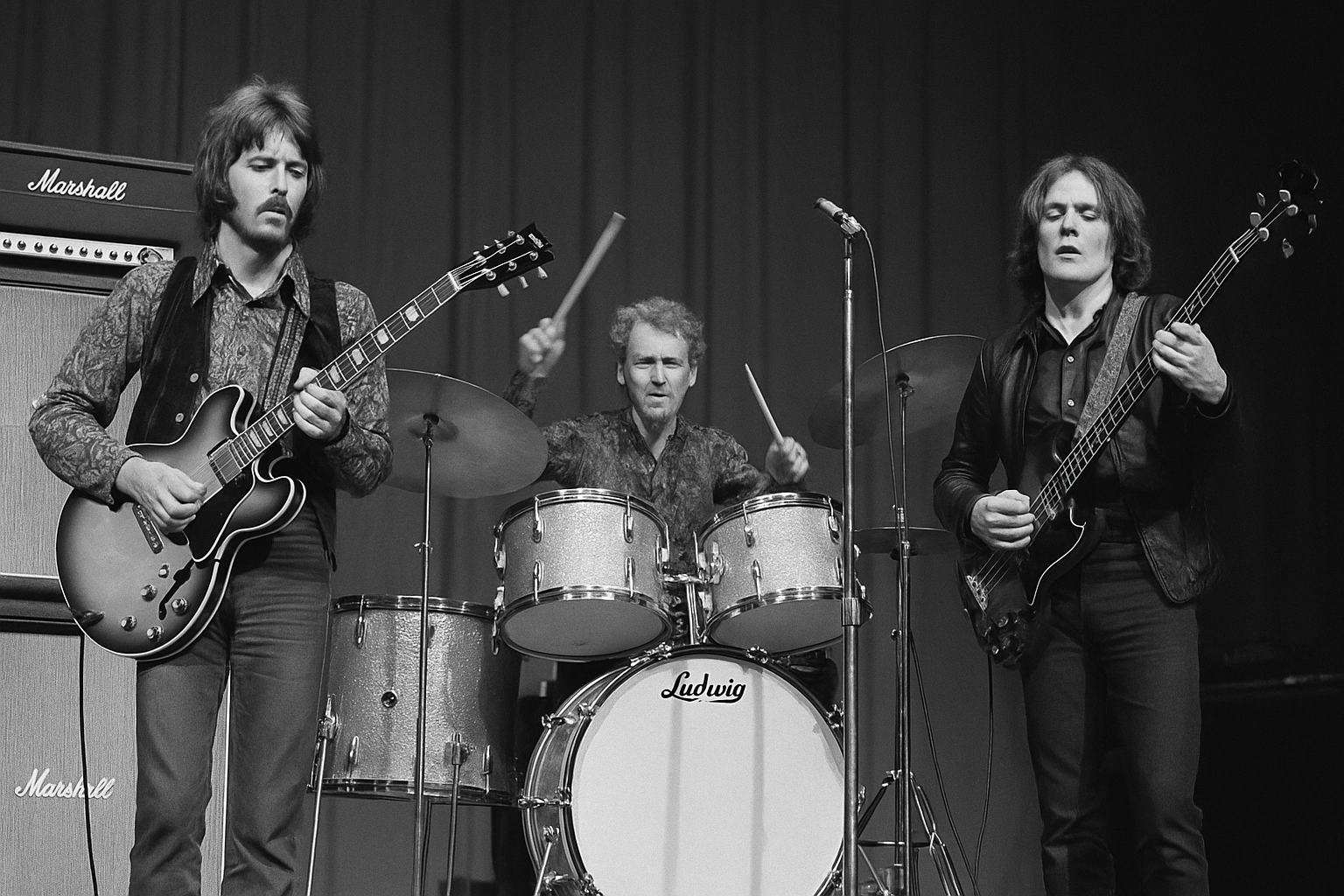As an Amazon Associate I earn from qualifying purchases.
Introduction: Clapton’s Blues Road
Looking back on his blues odyssey, it was clear from the start that Clapton pursued a mission. From the earliest days, the nickname “Slowhand” reflected the fanaticism fans showed. They admired his virtuosity and passion for American blues. Even then, Clapton’s playing hinted he was destined for more than just being a guitar player.
Want to explore the blues legends Clapton admired? Shop Muddy Waters and B.B. King albums here
To fully grasp the Clapton blues odyssey, one must explore his formative years. During this time, the Yardbirds introduced Clapton to a broader audience with his blistering guitar style. As a result, his Yardbirds period laid the foundation for much of British blues that followed.
After leaving the Yardbirds, Clapton joined John Mayall’s Bluesbreakers. Soon afterward, his work on the Beano album secured his place as one of Britain’s premier guitarists. Moreover, his tone, phrasing, and feel set new standards and inspired a generation of rock musicians. Inevitably, the famous slogan appeared: “Clapton is God.”
But this was only the beginning. With Cream, the first true supergroup, Clapton pushed blues further. In particular, Cream combined fearless improvisation, raw rock energy, and deep blues roots into something the world had never heard before. Additionally, his solos mixed technical brilliance with emotional fire.
As time went on, Clapton’s Crossroads performances became a rite of passage for fans worldwide. Here, his solos blended tradition with daring experimentation. From Yardbirds to Cream, Clapton became a legendary figure, his influence shaping the canon of British blues. Furthermore, his tone echoed across generations, proving that blues could thrive within modern rock’s evolving sounds.
In the end, Clapton’s impact went beyond technical skill. Indeed, Clapton’s blues influence reshaped both British and American music. His odyssey reflects a life of passion, reinvention, and integrity.
Ultimately, to understand his journey best, one must begin at the Yardbirds.

The Yardbirds and Clapton’s Early Blues Journey
When Clapton joined the Yardbirds in 1963, he began to shape the musician he would become. An infatuation with American blues players such as Muddy Waters marked the beginning of a zealous pursuit of authentic sound. Early on in Clapton’s career, his admiration for Delta and Chicago blues set him apart from British blues guitarists.
The purity of Clapton’s blues aesthetic, however, stood at odds with the band’s preference for more radio-friendly singles. Yardbirds Clapton was committed to faithfully covering songs, but his bandmates often pressured him to write more commercial hits. The growing rift between Clapton’s blues purism and the band’s commercial aspirations led to increasing tension. Still, Clapton’s talent was undeniable, and his speed and technique quickly made him a household name in London.
By 1964, Clapton’s reputation was already cemented by graffiti of “Clapton is God” scrawled across London. Fans were in awe of Clapton’s burning guitar solos, and his phrasing on the guitar was like a singing voice. Clapton’s Yardbirds performances further solidified the guitar great’s blues roots in rock and roll. His talent and passion for the blues were on full display with each show, and Clapton left a lasting impression on his young fans. The Yardbirds were an essential first step in Clapton’s blues legacy in Britain.
In the end, the contrast between Clapton’s musical direction and the Yardbirds’ mainstream sound was irreconcilable. By 1965, Clapton had left the group, marking the first full stop in his storied career. Clapton was succeeded as lead guitarist by Jeff Beck, another up-and-coming guitarist. Clapton’s contributions to the Yardbirds, however, had already transformed audience expectations for the band.
The future Clapton story from Yardbirds to Cream was yet to be written, but these early years were formative. His dedication to blues authenticity marked the Yardbirds period in Clapton’s story, but also his unwillingness to compromise. The early years of the Yardbirds would also go on to define Clapton’s blues influence on his contemporaries and future generations of rock and roll musicians.
The next stop on the Clapton blues journey was with John Mayall’s Bluesbreakers, a band Clapton was eager to join.

Experience the Beano Album that defined Clapton’s sound. ( Get the remastered album on Amazon.}
Clapton with John Mayall’s Bluesbreakers and the Beano Album
Eric Clapton was on the fast track of his blues journey when he signed on with John Mayall’s Bluesbreakers. The duo’s resulting album, Blues Breakers with Eric Clapton, earned the popular nickname Beano album. It transmuted Yardbirds Clapton into Bluesbreakers Clapton and etched his name among the best British blues guitarists.
From this moment forward, the Beano album fully unveiled Clapton’s guitar playing prowess. His tone was razor-sharp, raw, and emotional—combining the grit of Delta blues with Chicago’s steamy intensity. Audiences took immediate notice of his skill, while critics hailed the Beano album as the record where Clapton’s blues roots in rock music became electrifyingly real.
As recognition grew, British walls were soon scrawled with the slogan, “Clapton is God.” The graffiti instantly symbolized his blues godliness and testified to his rising stature among British blues guitarists. He was no longer an up-and-coming player; he had become a cultural icon, redefining the Clapton blues sound in the realm of rock music.
Building on this fame, the Beano album also laid the groundwork for Clapton to become a legend. The solos were scorching, kindling that would light the fire in future musicians. It emphasized Clapton’s blues influence, a powerful meeting of timeless blues tradition and bold electric innovation. The album was also a standout for the electric guitar itself, demonstrating that it had a distinct voice in blues and rock.
Even decades later, the Beano album remains a key chapter in Clapton’s legacy. The album is revered in blues history and marks a defining moment in Clapton’s story, from the Yardbirds to Cream. By embracing John Mayall’s sound and infusing his own Clapton touch, he fully demonstrated his blues roots in rock music.
However, change was inevitable. Clapton would not stay in one blues band. The next stage of his Eric Clapton blues journey was in Cream. The Cream supergroup let Clapton break boundaries and begin shaping the new legend of Clapton in Cream.
The change was necessary for the continuation of Eric Clapton’s blues journey and for laying the groundwork for Clapton’s Subsequent live triumphs at Crossroads.

Clapton’s Cream: The First Supergroup
Eric Clapton joined forces with Ginger Baker and Jack Bruce in in 1966 to form Cream. The lineup became iconic, spawning the very first Cream supergroup. Their mix of blues, jazz, and bold improvisation was revolutionary, pointing rock music in an entirely new direction.
The Eric Clapton blues journey had already passed through the Yardbirds and the Clapton Bluesbreakers. Each left lasting marks on him as an artist. However, Clapton’s Cream was a bigger stage, allowing him to showcase his evolving guitar style. It proved both technically daring and emotionally raw.
Audiences were stunned by Sunshine of Your Love, White Room, and the explosive Crossroads live recording. These songs revealed how Clapton shaped British blues while drawing deeply from American traditions. The result was a blues influence on rock music that could not be ignored. British blues guitarists had finally gained their champion.
Cream faced problems, however, as Baker and Bruce often clashed bitterly. Clapton kept things together despite distractions and pursued his own musical ambitions. The longer they toured, the more fans chanted “Clapton is God.”
Graffiti across London echoed his growing reputation and unmatched artistry. Beano had shown he could thrive as a Bluesbreaker, but Cream demanded something greater. Extended jams allowed Clapton to showcase improvisational brilliance that moved beyond blues. He displayed influence over progressive rock and even heavy metal. Each new performance added another chapter to the Clapton mythology.
Constant touring took its toll, however. Egos collided, and relationships within the group collapsed under pressure.
Cream rose like a shooting star, only to fall quickly. After just two years, the group ended. Yet Cream still left an indelible, if brief, mark on music history.
Even today, Cream remains influential. The Clapton story, from the Yardbirds to Cream, is central to modern music history. The group allowed Clapton to experiment with art, discover new directions, and build a worldwide fan base that has lasted for decades.
Cream was groundbreaking yet troubled, marked by both ego and exhaustion. Despite that, the songs have endured beautifully. Listeners still hear the emotion of Cream and feel the fire of Clapton’s style in their recordings.
In many ways, Cream was a pivotal moment in Eric Clapton’s blues journey. It revealed Clapton’s power to shape British blues while guiding rock toward new frontiers.
Despite its short lifespan, the first supergroup created a revolution that still echoes throughout music today.
The Breakup and Its Aftermath
Cream was a fantastic experience, but the supergroup never lasted. The British power trio began to disintegrate under constant pressure and relentless touring. By 1968, Cream was over. The breakup shocked fans; however, it also took Eric Clapton’s blues journey to a deeper level. Furthermore, Clapton’s next step continued on the path of blues roots in rock music, but with firm conviction.
The Cream breakup shook Clapton, and he turned to quieter projects to regain balance. Soon after, Clapton formed Blind Faith with Steve Winwood, an experiment that was short-lived. Nevertheless, Clapton found success, and the project revealed a different side of his guitar style: restrained, powerful, and emotional. Then, there was the tour with Delaney & Bonnie, where Clapton learned teamwork and realigned his musical direction.
Clapton Bluesbreakers’ foundations did not disappear, however. The Beano album continued to underpin Clapton’s tone, phrasing, and confidence. Moreover, Clapton also still carried the Yardbirds discipline, though he pushed to discover new sounds. His blues roots never left him; instead, they supported every project and reinforced his evolving style.
Clapton’s legacy continued to grow in the wake of the Cream breakup. Audiences in both the U.S. and U.K. embraced the mantra, “Clapton is God.” At the same time, Clapton’s blues influence soon stretched beyond British blues guitarists, shaping the broader sound of rock music. In addition, Clapton’s Crossroads live shows and studio albums became essential resources for musicians worldwide. From the Yardbirds to Cream, the Clapton story captured British blues at its height.
Ultimately, Cream was only a chapter in the larger Eric Clapton blues journey. Even after Cream disbanded, Clapton’s legacy continued to grow.
Above all, Clapton managed to reinvent himself while staying true to his blues roots in rock music.
Clapton’s Guitar Style and Blues Legacy
Clapton’s guitar style was unmistakable, built on soulful vibrato, expressive bends, and legendary sustain. His notes dripped with raw emotion and technical mastery.
He gained fame for his tone control, setting himself apart from other British blues guitarists and shaping the Clapton legacy in rock.
The Yardbirds Clapton years leaned toward purist blues, but with the Clapton Bluesbreakers and the Beano album, his searing tone exploded. “Clapton is God” graffiti soon spread across London, proving how deeply the Clapton blues influence had reached.
Beyond skill, his influences shaped the Clapton guitar style. B.B. King’s vibrato, Johnson’s haunting phrasing, and Freddie King’s powerful attack became key lessons. These masters added depth, emotion, and versatility, showing how Clapton shaped British blues into a global force.
Clapton Cream created another canvas. The Cream supergroup blended blues with jazz, rock, and improvisation. Songs like “Clapton Crossroads live” became classics, showing how Clapton’s roots electrified audiences worldwide.
From Yardbirds to Cream, Clapton story chapters revealed his constant evolution.
The Clapton legacy extended beyond Britain. Jimmy Page, Stevie Ray Vaughan, and other British blues guitarists found inspiration in his phrasing, sustain, and emotion. His style became their foundation. Clapton’s blues roots in rock music echoed through their unique voices.
Clapton’s work balanced discipline and freedom. The Clapton guitar style proved blues techniques could drive rock into the future while honoring its roots.
His blues journey remains captivating, proof of how tradition and modern sound meet at the crossroads.
Conclusion: Carrying the Blues Forward
Eric Clapton’s blues odyssey bridged the gap between tradition and contemporary rock. From his Yardbirds Clapton years to the Clapton Bluesbreakers and later Clapton Cream, the impact on the music world remains timeless. The Clapton guitar style has always been defined by emotion, technical mastery, and a strong blues influence.
In addition, the Beano album, “Clapton is God” graffiti, and the Cream supergroup all shaped British blues history.
Each stage of Clapton’s journey reinforced the Clapton legacy, leaving a mark of Clapton’s blues influence on music worldwide. From the Yardbirds to Cream, Clapton’s journey proves how his blues shaped rock’s modern sound and spirit.
Rediscovering the Yardbirds, Bluesbreakers, and Cream recordings is a rewarding journey for music lovers today. The Clapton legacy continues, inspiring a new generation of British blues guitarists.
To carry blues forward, we must honor Eric Clapton’s role in shaping British blues and his timeless influence.
